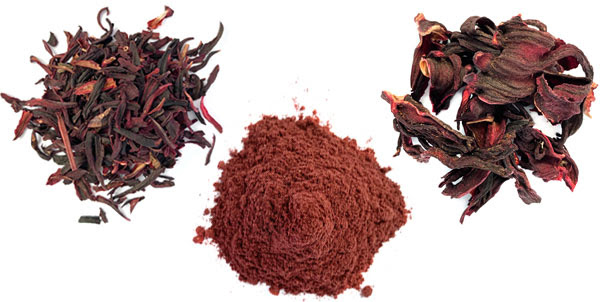Hibiscus sabdariffa is a tropical flowering plant in the mallow family. In fact, it is commonly referred to as rose mallow. This species is native to west Africa, where it is known as carcade. However, because it is widely cultivated and used as food in so many parts of the world, the plant is also known by many other names, most notably as roselle, sorrel, Zobo in Nigeria and Flor de Jamaica.
The vibrantly coloured flowers add colour to teas, soft drinks and other beverages. For example, in Africa the dried calyx is made into Sudan Tea, and in the Caribbean sorrel tea is combined with beer to produce a popular beverage called Shandy Sorrel, in Nigeria, it is combined with ginger, orange peel and other herbs to make zobo juice that is highly nutritious.
The dried flowers are also used in cooking. In Australia, Burma, Nigeria and Trinidad, the whole buds are made into jam or jelly. In the Philippines, hibiscus is an ingredient in Polynesian Chicken Stew. In India, hibiscus is used to flavor soups and chicken and fish.
Hibiscus flowers have a mildly sweet and slightly tangy flavor and lend a beautiful crimson color to hot or cold beverages.
Tea made from the flowers is a popular beverage throughout the Caribbean, Nigeria and Mediterranean, and is often combined with rum or other spirits. In Egypt, it is traditional to toast the bride and groom with a drink made from hibiscus flowers at weddings.
ALLERGEN: Hibiscus may be intercropped with peanuts. Occasionally, fragments of peanut shells may be present.
For decorative purposes: Decoct for use in soaps, shampoos and other formulations for skin and hair.
For Culinary Reasons: Add to tea blends, jams, baked goods, soups and salads, juice, etc.
Industrial use: Hibiscus is a natural colorant and flavoring agent in the food and beverage industries.
We offer five different pure varieties of hibiscus flower in both whole and powdered forms. We also have several tea blends that include hibiscus in both loose leaf and bagged options.
Some Ayurvedic medicine treatments claim that hibiscus has the ability to strengthen your hair and even help hair regrowth. When fresh hibiscus flowers are mashed, they have a slimy, slick consistency that can be a chemical-free way to condition your hair—another bonus if it proves true to also make hair stronger and grow faster.
HIBISCUS PAIRS WELL WITH
There are a variety of herbs and spices that hibiscus mixes well with, here are just a few to start with. There is a lot of room for experimentation—create a new flavor combination!
CHILI PEPPER POWDER
Mix chili powder in with hibiscus for an exciting sweet & spicy flavor.
PEPPERMINT
Light, refreshing taste that blends well with most herbs including hibiscus.
Recipe
Hibiscus and Mint Shampoo
1 cup filtered warm water
2 teaspoons dried hibiscus
1 teaspoon dried mint
1/4 cup liquid castile soap
2 tablespoons almond oil or other carrier oil
25 drops of preferred essential oil for fragrance
Combine the warm water, dried hibiscus flower, and mint in a small bowl and allow to steep, uncovered, for 20 minutes. Strain and discard herbs, reserving the infused liquid. Pour the infusion into a clean bottle (a recycled shampoo bottle works great). Add the castile soap, almond oil, and essential oil. Cap the bottle and turn it over a few times to mix.
For educational purposes only
This information has not been evaluated by the Food and Drug Administration.
This information is not intended to diagnose, treat, cure, or prevent any disease.
before making any changes to your diet you should always consult with your doctor,
especially if you are pregnant, nursing or have existing conditions.







No comments:
Post a Comment